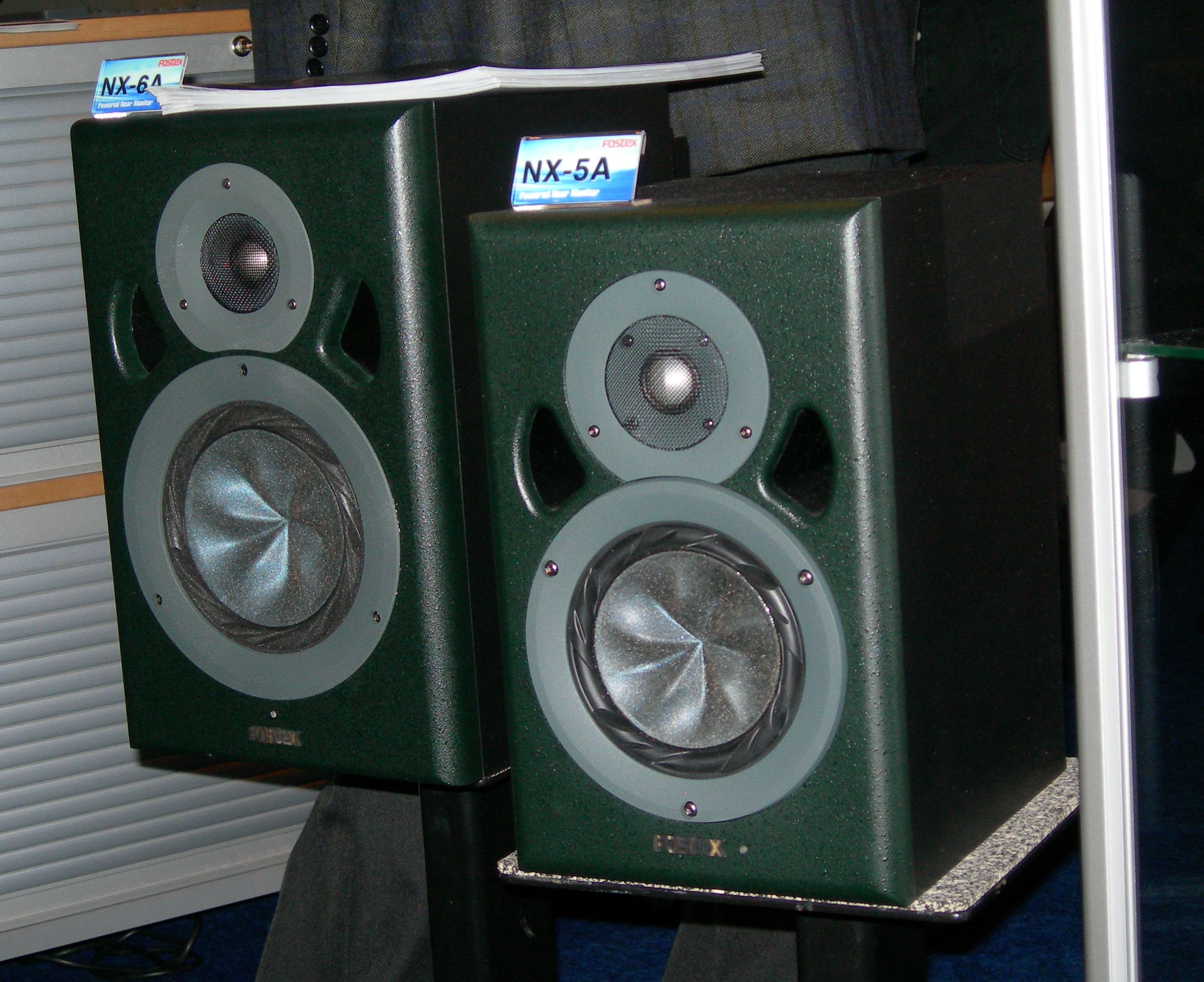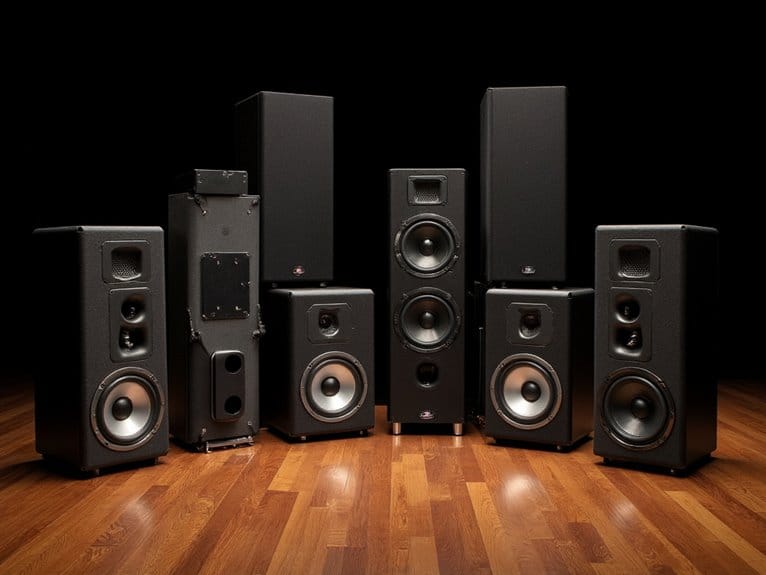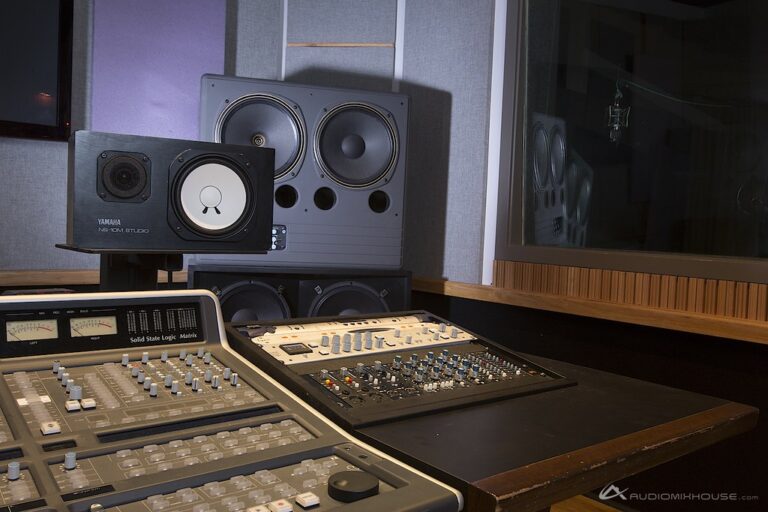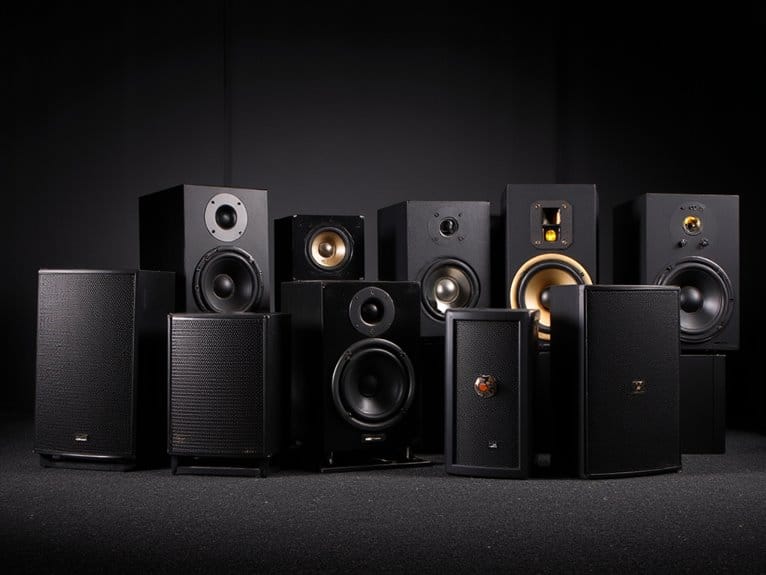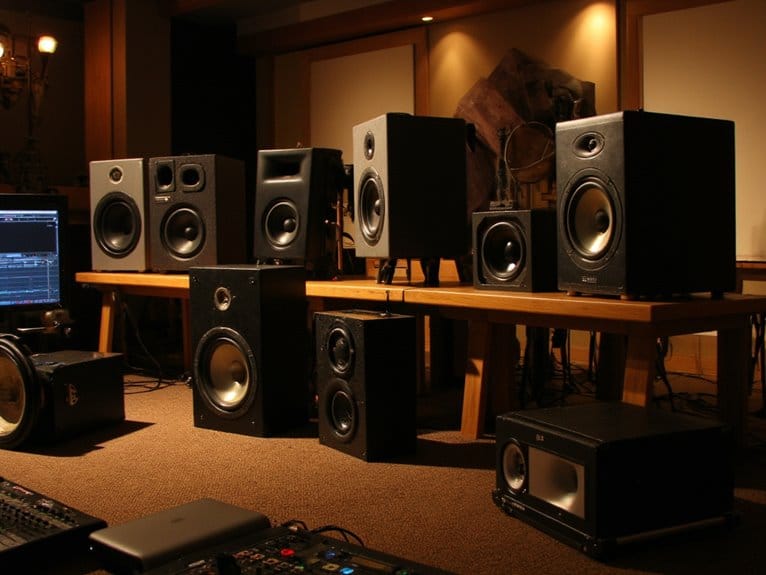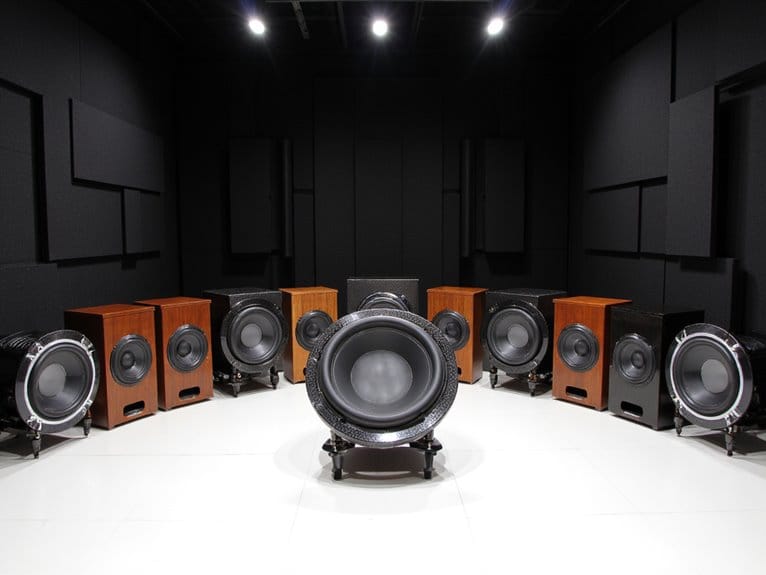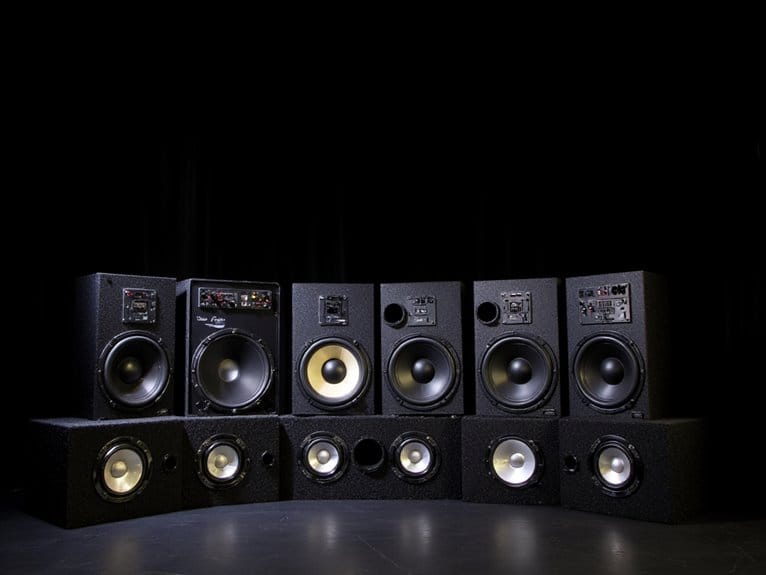Nearfield Vs. Midfield Monitors: Choosing the Right Setup for Your Studio
When deciding between nearfield and midfield monitors for my studio, I must consider the room size and listening preferences. Nearfield monitors excel in close listening environments within 3-5 feet, ideal for small studios seeking precise sound reproduction and minimal room impact. On the other hand, midfield monitors are designed for spacious studios with a 3-way design for balanced sound dispersion and are preferable for mixing and mastering due to wider sound stages. Choosing the right setup depends on the room dimensions and sound accuracy needs. Make an informed decision based on these factors.
We are supported by our audience. When you purchase through links on our site, we may earn an affiliate commission, at no extra cost for you. Learn more.
Nearfield Monitors for Close Listening
When selecting studio monitors for close listening, nearfield monitors prove essential due to their precise sound reproduction in small studio environments. These monitors are designed to excel in providing accurate sound representation when placed within 3-5 feet of the listener. In small studio rooms, nearfield monitors shine by minimizing the impact of room acoustics, allowing for critical listening and detailed sound adjustments without unwanted interference.
The bass response of nearfield monitors in close listening scenarios is particularly remarkable. Their focused sound experience makes them ideal for tasks requiring precision, such as audio editing and critical listening sessions. By reducing the influence of room acoustics, nearfield monitors deliver a more accurate sound that remains consistent regardless of the studio environment’s size or shape.
In the domain of studio monitors, nearfield options stand out for their ability to offer a clear and detailed sound experience, making them a top choice for professionals seeking accuracy in their audio work. Their close proximity to the listener allows for a more direct and unaltered sound, essential for tasks that demand pinpoint precision and faithful sound reproduction. For those working in small studio spaces or requiring a high level of accuracy in their sound monitoring, nearfield monitors are a reliable and essential tool.
Midfield Monitors for Balanced Sound
Moving from nearfield to midfield monitors, the shift in positioning from close to a slightly further distance allows for a broader soundstage and accommodates higher volume levels. Midfield monitors are specifically designed for spacious studio environments, where accurate sound projection across larger distances is important. These monitors excel in providing a balanced sound representation, making them ideal for mixing and mastering applications that demand detailed audio adjustments.
One key feature of midfield monitors is their dedicated midrange drivers, which play an essential role in enhancing sound accuracy and detail. This guarantees a more precise focus on the frequency bands, allowing for a clearer representation of audio content. The 3-way design of midfield monitors further contributes to their sound accuracy, providing better cohesion and reproduction of audio signals.
In professional settings, where sound quality is paramount, midfield monitors shine by delivering a more well-rounded and detailed audio experience. Their ability to maintain a balanced sound profile makes them a preferred choice for critical listening and production tasks. Whether it’s fine-tuning a mix or mastering a track, midfield monitors offer the precision and clarity needed to achieve exceptional results in sound production.
Studio Size Considerations
Consideration of studio size is important in determining the appropriate type of monitors to use for best sound quality and performance. Nearfield monitors are best suited for smaller studios, typically ranging from 100 to 400 square feet, where room reflections can be a concern. These monitors excel in compact spaces by minimizing reflections and providing focused sound directly to the listener. In contrast, midfield monitors are recommended for larger studios, usually over 400 square feet, to maintain optimal sound quality across wider listening distances.
Room dimensions play an important role in the effectiveness of nearfield versus midfield monitors. In smaller studios, nearfield monitors are advantageous due to their ability to minimize the impact of room reflections and deliver a more accurate sound representation. On the other hand, in larger studios, midfield monitors are better suited to provide a balanced sound dispersion across the room.
When choosing between nearfield and midfield monitors, it is essential to take into account the size of your studio to ensure that the monitors can perform optimally based on the room dimensions. Selecting the appropriate monitor type based on your studio size will help achieve the best sound quality and performance for your specific setup.
Listening Preferences and Sound Accuracy
In determining the most suitable studio monitors for peak sound accuracy, one must carefully consider listening preferences and the specific sound requirements of the environment. Nearfield monitoring excels in close listening environments, providing precise sound accuracy within 3-5 feet. These monitors minimize room reflections, ensuring accurate sound representation in small studios or control rooms. On the other hand, midfield monitors are ideal for wider sound stages and higher volume levels, suited for distances of 6-10 feet. They offer balanced sound projection across larger distances, making them suitable for mixing and mastering applications.
Both nearfield and midfield monitors cater to specific listening preferences. Nearfields focus on proximity, delivering a detailed and accurate sound experience up close. In contrast, midfields emphasize wider dispersion and volume capabilities, creating a more immersive sound field suited for larger listening environments. When choosing between these monitor types, it is essential to align your selection with your listening preferences and the intended use of the monitors, whether it be for critical listening, mixing, or mastering tasks. Ultimately, the goal is to achieve a precise and balanced sound reproduction that meets the demands of your specific studio setup and workflow.
Choosing the Ideal Monitor Setup
When selecting the ideal monitor setup for a studio setting, it is important to evaluate the room size, listening distance, and desired level of sound accuracy and detail to determine whether nearfield or midfield monitors would be most appropriate. Studio monitors are designed with specific characteristics to cater to different room sizes and listening environments. Nearfield monitors, typically placed 3-5 feet away from the listener, are best suited for small studios. Their close proximity helps minimize room reflections and acoustical issues, enhancing sound accuracy. In contrast, midfield monitors excel in larger rooms, offering a wider sweet spot for accurate sound projection at distances of 6-10 feet. These speakers provide higher volume levels, better bass extension, and are ideal for collaborative work environments, such as a control room.
Selecting between nearfield and midfield monitors hinges on various factors, including the acoustics of the room and the listener’s preferred listening position. Nearfield monitors are best for individuals seeking a more focused sound experience, while midfield monitors cater to those requiring a broader listening area. Understanding how bass frequencies behave in the room is vital when deciding on the appropriate monitor setup. By considering these elements, one can choose the monitor setup that best aligns with their studio requirements.

